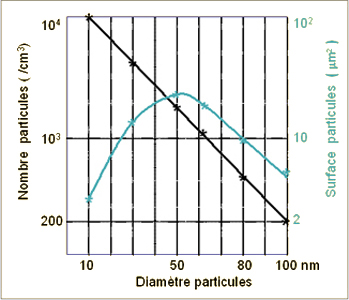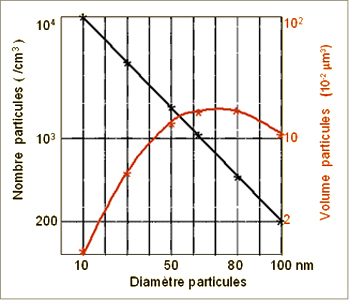What is the relevant distribution?

Number and volume distributions of the same aerosol.

Number and surface distributions of the same aerosol.
The distribution in volume, representative of the distribution in mass, of these particles is significantly different from the distribution in numbers. To establish thresholds in mg/cm³ may mask the impact of the smallest particles that may be the most dangerous.
Surface distribution?
If one thinks that the total surface available for the particles is a representative reactivity parameter, we will prefer to characterize the aerosol by its distribution on the surface whose shape can be observed in our example.


